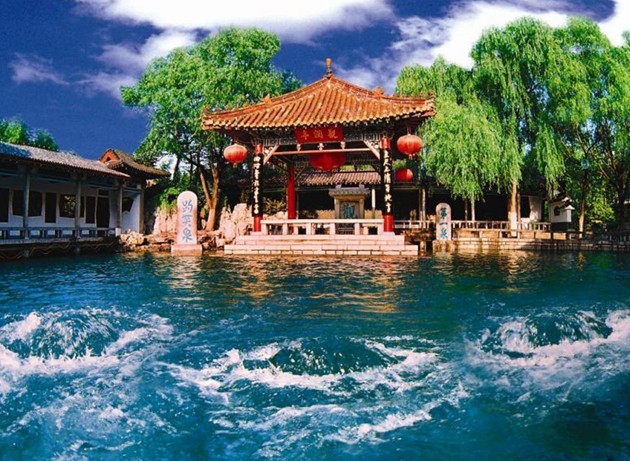Qilu author:
twelve years, the "Ji'nan city of famous spring protection regulations" ushered in a substantial revision. The reporter learned from the Ji'nan city famous spring protection office this morning that the revised regulations put forward the principle of conservation spring first. It is clear that the city construction and development should adhere to the conservation spring priority, highlight the characteristics of the spring city, and highlight four ecological red lines, making it possible to protect the spring water from the source.

the revised "Ji'nan city famous spring Protection Ordinance", a total of six chapters and fifty-eight sections, the revised part of the main highlights the characteristics of innovation, ecology, coordination and development.
put forward the principle of preserving spring to put the spring water protection in a more important position
the current Ji'nan is in the period of rapid urban construction and development. How to give consideration to the relationship between the good and the spring conservation in the city construction has always been the most concerned problem for the general public. The revised regulations clearly put forward the priority of the conservation spring. The principle of urban construction and development should adhere to the priority of protecting springs and giving prominence to the characteristics of springs. The protection of the famous spring should strengthen the protection of the spring source, implement the scientific conservation spring, keep the spring water gushing, ensure the water quality of the spring water, take account of the rational use of the spring water, and combine with the Hong Yang spring culture.
four ecological red lines
were drawn from the source protection spring regulations. The revised regulations highlighted four ecological red lines. The protection range and control requirements of the mountain and river water system in the direct supply area of the spring water, the key leakage zone, the spring water supply area and the pooled outcropping area are clarified, and the whole spring ecosystem is protected, and the protection of the spring water from the source is possible. At the same time, in the fourteenth article, we should delineate the red line of the ecological control of the mountain and river water system in the direct supply area of spring water, the key leakage zone, the spring water supply area and the collection area, and the regional scope of the prohibition and restriction of the construction area and the general plan for the protection of the famous spring in the direct supply area. At the same time, the implementation of the regulations has enhanced the operability of the regulations. Within the scope of protection of
, the regional environmental impact assessment of springs should be increased through the
thirty-fifth, thirty-sixth stipulates in the regulation of water supply
regulations, the Municipal People's government and the relevant departments should gradually advance the spring water direct drinking project, and carry out classified water supply according to the separation of drinking and use. The Municipal People's government should set up springs swimming pools, spring water intake points and other places in quanchi, quanqu and coastal areas, so as to facilitate the public to get water and water.
in addition, the regulation further clarifies the division of responsibilities for the protection of springs, and emphasizes the public participation in the protection of springs. According to the work of the spring water application, the regulations clearly put forward that the
City famous Quan protection department should carry out the protection of the natural cultural heritage of spring water with the relevant departments. To explore, organize and protect the natural cultural heritage of spring water, strengthen the research on the connotation and value of the natural culture of the spring water, and explore the ways of the utilization and development of the spring water.